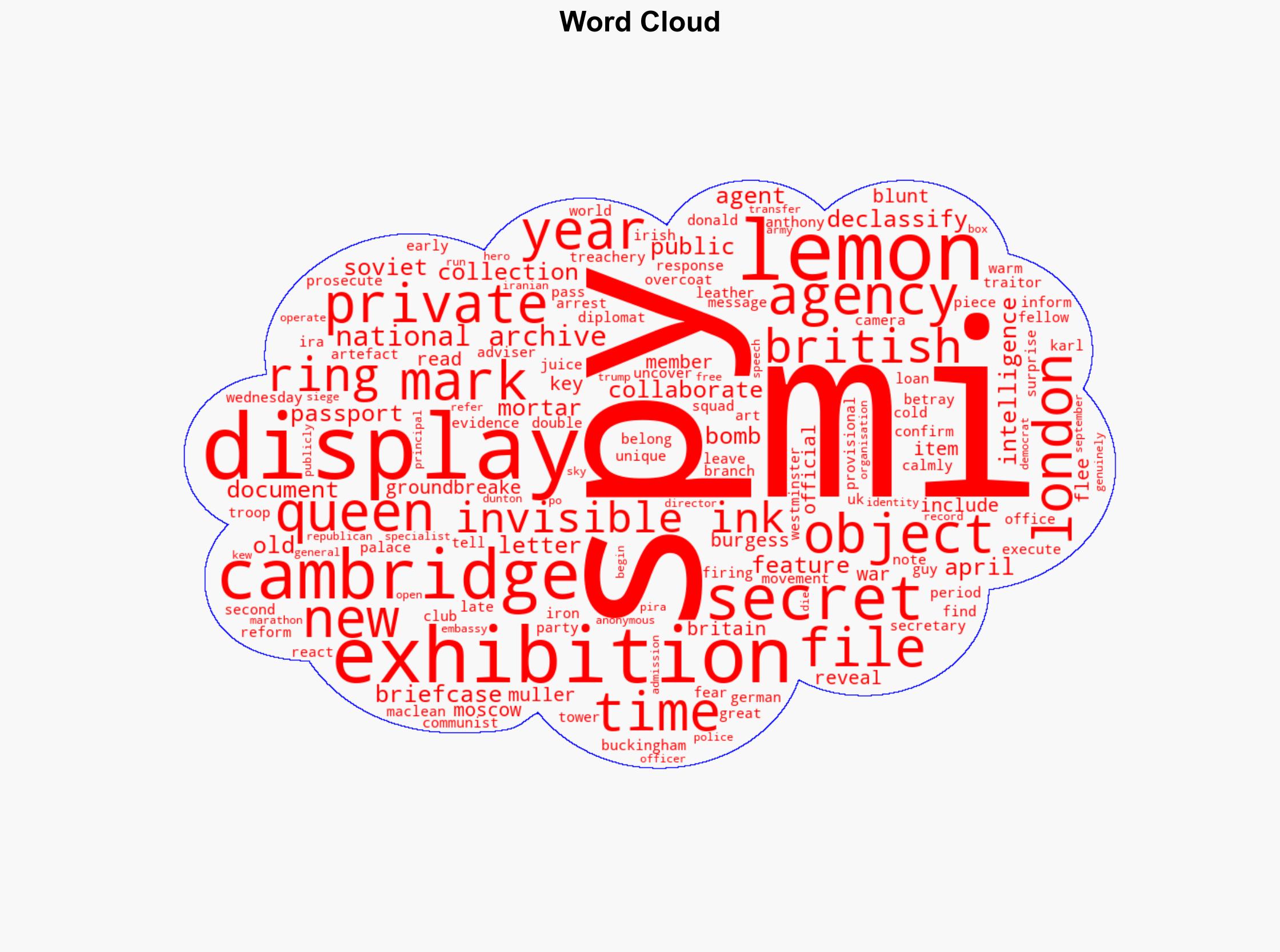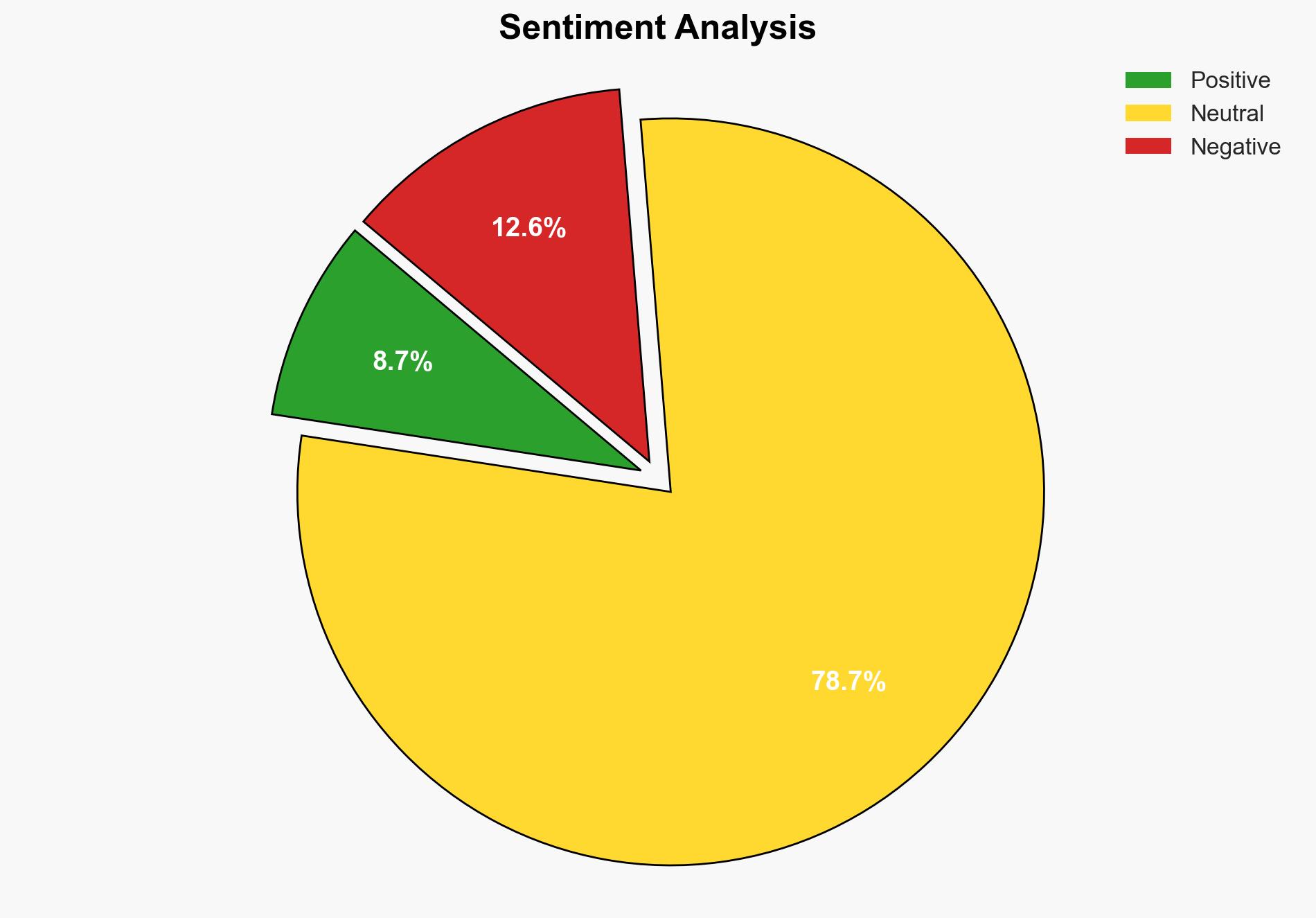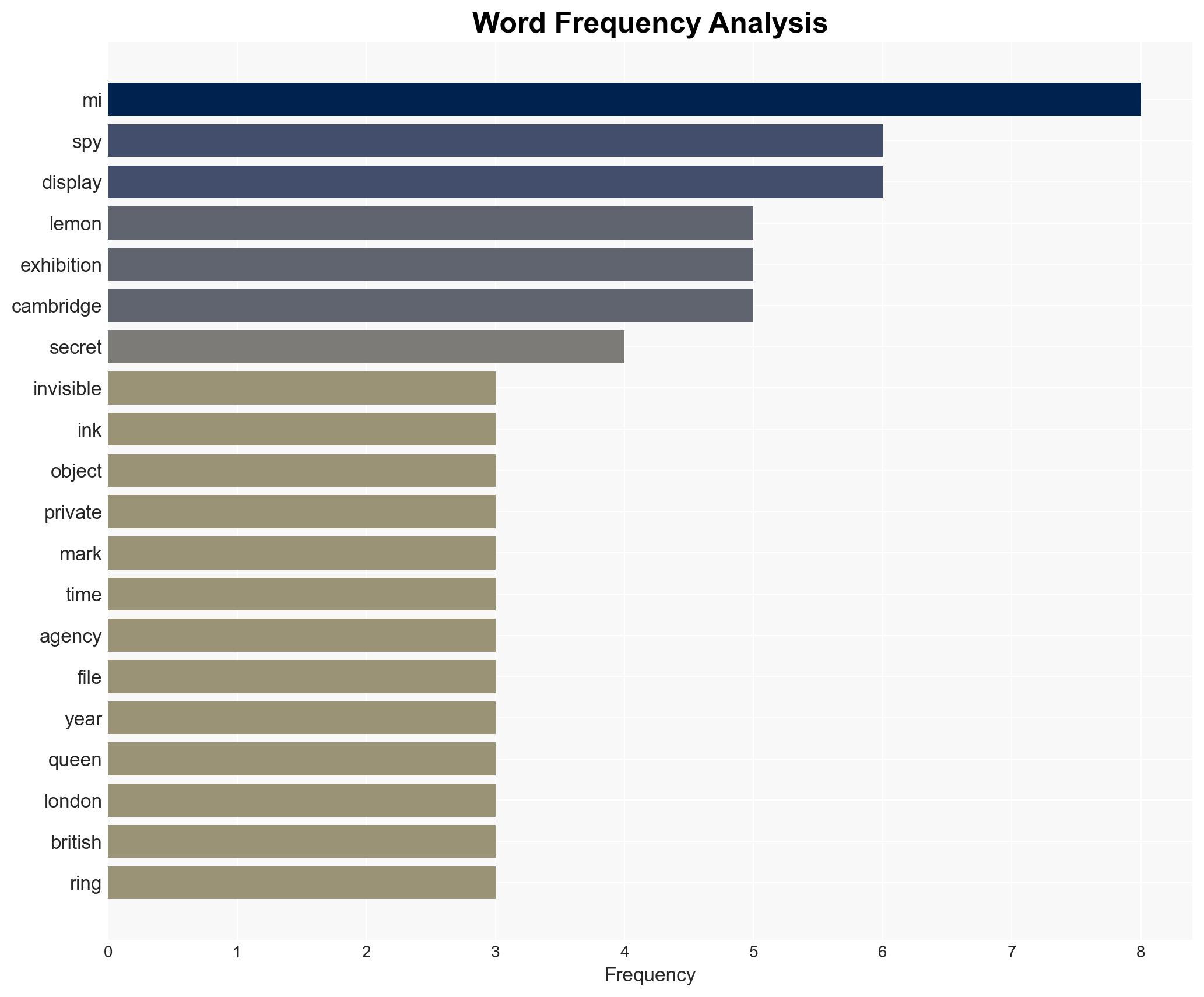Not so secret Notorious Soviet spy’s passport part of unique MI5 exhibition – Sky.com
Published on: 2025-04-01
Intelligence Report: Not so secret Notorious Soviet spy’s passport part of unique MI5 exhibition – Sky.com
1. BLUF (Bottom Line Up Front)
The MI5 exhibition featuring declassified documents and artifacts, including a UK passport belonging to a member of the Cambridge spy ring, highlights historical espionage activities. The exhibition offers insights into intelligence operations and the role of espionage during the Cold War. Key findings include the strategic use of invisible ink and the implications of espionage on national security. Recommendations focus on leveraging historical insights to enhance current intelligence strategies.
2. Detailed Analysis
The following structured analytic techniques have been applied for this analysis:
General Analysis
The exhibition showcases items such as a UK passport, a leather briefcase, and letters using invisible ink, all linked to espionage activities. These artifacts provide a tangible connection to the espionage tactics used by the Cambridge spy ring, which included individuals like Guy Burgess and Donald Maclean. The exhibition also features items related to other espionage cases, such as the execution of Karl Muller and the use of lemon juice as invisible ink. The collaboration between MI5 and the National Archives underscores the importance of transparency and public education on historical intelligence operations.
3. Implications and Strategic Risks
The exhibition highlights the persistent threat of espionage and the need for robust counterintelligence measures. The historical context provided by the artifacts emphasizes the long-standing challenges faced by intelligence agencies in safeguarding national security. The potential for espionage activities to influence political and military outcomes remains a significant risk. Additionally, the exhibition’s focus on declassified documents may prompt discussions on the balance between transparency and operational security.
4. Recommendations and Outlook
Recommendations:
- Enhance public awareness and education on historical espionage to strengthen societal resilience against modern threats.
- Invest in advanced counterintelligence technologies to detect and mitigate espionage activities effectively.
- Encourage collaboration between intelligence agencies and historical institutions to preserve and analyze historical intelligence data.
Outlook:
In the best-case scenario, increased public awareness and improved counterintelligence measures reduce the impact of espionage activities. In the worst-case scenario, espionage continues to pose significant threats to national security. The most likely outcome involves a balanced approach, with ongoing efforts to enhance intelligence capabilities while maintaining transparency and public trust.
5. Key Individuals and Entities
The report mentions significant individuals such as Guy Burgess, Donald Maclean, Karl Muller, and Anthony Blunt. These individuals played crucial roles in historical espionage activities, and their actions continue to influence contemporary intelligence strategies. The exhibition is a collaborative effort between MI5 and the National Archives, highlighting the importance of institutional partnerships in preserving and understanding historical intelligence operations.





